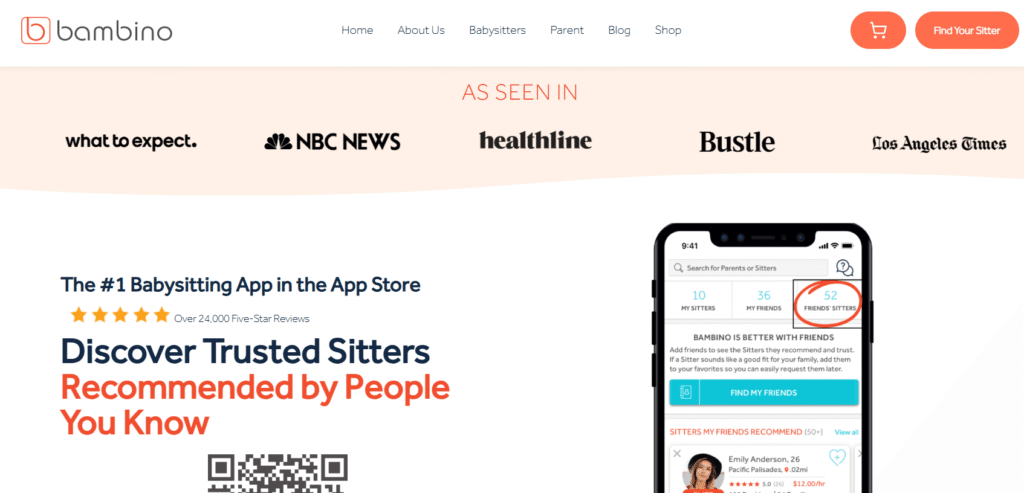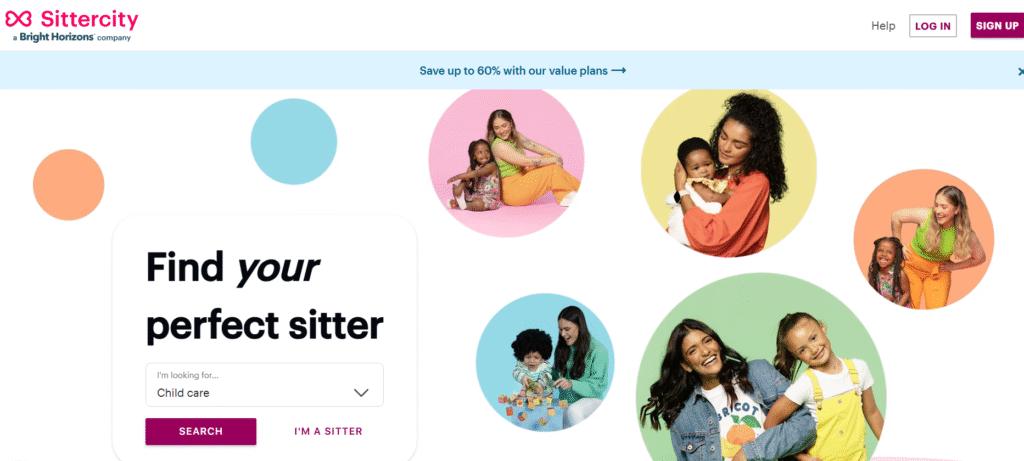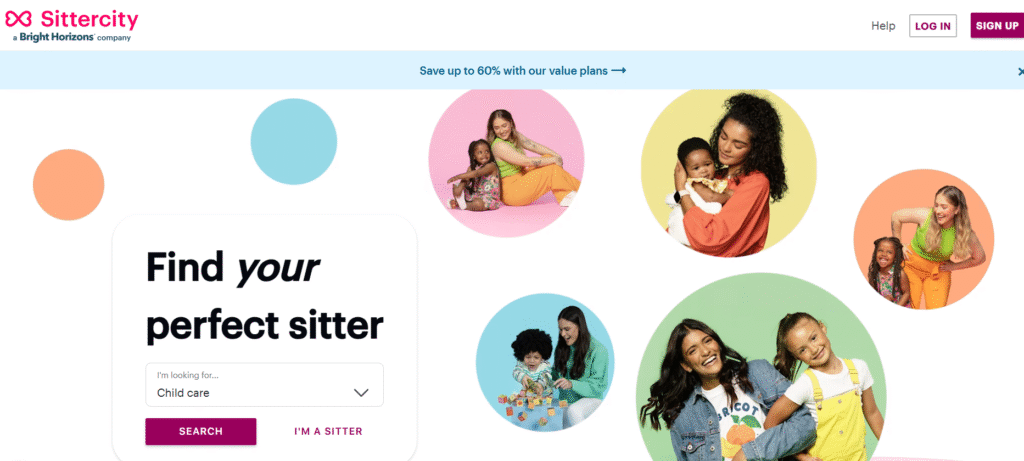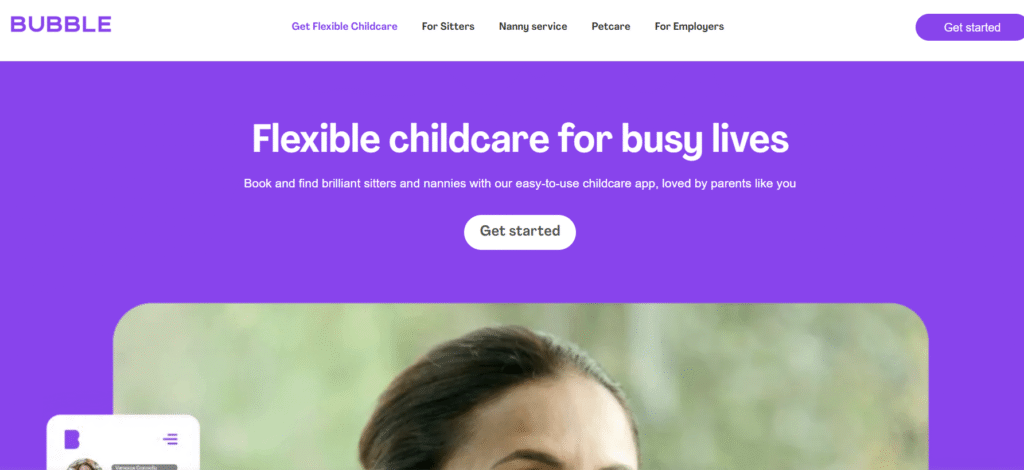How To Make Money Babysitting

So you’re scrolling through your bank account and thinking, “There’s gotta be a better way to make money without selling my soul to a corporate cubicle.”
Well, friend, let me introduce you to something you’ve probably overlooked since your teenage years: babysitting.
When I first started babysitting, I didn’t see it as a way to make serious money. I just loved spending time with kids.
But as I gained experience, I learned how valuable this job can be. Babysitting taught me patience, responsibility, and how to handle unexpected situations calmly.
I also discovered that with the right skills and a professional attitude, babysitting can become a reliable source of income while doing something meaningful.
Ready to turn naptime into paycheck time? Let’s jump in.
What Is Babysitting?
Here’s the thing: babysitting isn’t just parking yourself on someone’s couch while scrolling TikTok and making sure the kids don’t burn the house down.
That might’ve flown in the ’90s, but modern babysitting? It’s a whole different ballgame.
At its foundation, babysitting means temporarily caring for children while their parents or guardians handle other responsibilities.
But honestly, it’s so much more than that basic definition suggests. You’re essentially becoming a mini-parent, trusted advisor, entertainment coordinator, and safety officer all rolled into one.
Think of yourself as a combination of teacher, entertainer, and crisis manager, with better pay than most entry-level jobs, might I add.
Now, here’s where people get confused. Babysitting and being a nanny aren’t the same thing, even though folks use these terms interchangeably.
Babysitting typically means part-time, occasional, or casual care, maybe date nights, emergencies, or after-school hours.
Nannies, on the other hand, usually work full-time with regular schedules, have broader responsibilities (sometimes including light housework or meal prep), and occasionally even live with the family.
Babysitting offers flexibility that nannying simply doesn’t. You control your schedule, pick your clients, and decide how much work you want to take on.
It’s genuinely one of the smartest side hustles out there, especially if you value freedom over a fixed 9-to-5.
How Much Money Will You Make As A Babysitter?
Alright, let’s talk numbers, because that’s why you’re here, right? The burning question everyone asks is: “How much can I actually make doing this?”
The honest answer? It depends. I know, I know, you wanted a specific number. But stick with me, because understanding what influences your earning potential is way more valuable than some random figure I pull out of thin air.
Your babysitting income hinges on several key factors: your experience level, any certifications you’ve earned, your geographic location, the number of children you’re watching, special requirements (like caring for infants or kids with special needs), the time of day or week you’re working, and any additional services you provide beyond basic childcare.
Let me break down some realistic numbers. In the United States, the average hourly rate for babysitting hovers around $15-$22 per hour.
That’s your baseline. If you’re just starting as a teenager or complete beginner, especially in smaller towns or rural areas, you might charge $10-$14 per hour initially.
Don’t feel bad about starting lower; everyone does.
But here’s where it gets interesting. Experienced sitters with certifications like CPR and First Aid? They’re pulling in $20+ per hour easily.
And if you’re in high-cost urban areas like New York, San Francisco, or Los Angeles, rates can skyrocket to $25-$40+ per hour.
I’ve personally seen sitters in Manhattan charging $35 an hour and staying fully booked because parents know quality childcare is worth every penny.
Additional factors that boost your rates:
- Multiple children: Each extra kid should add $3-5 to your hourly rate. Watching three kids is exponentially harder than watching one
- Overnight care: Parents will pay $100-$200+ for overnight sitting, which often includes some sleep time
- Holiday and weekend rates: Charge 1.5x to 2x your normal rate for New Year’s Eve, holidays, or late Saturday nights
- Special services: Homework help, meal preparation, or light housekeeping? Add $5-$10 per hour.
From a financial perspective (and yes, I have a finance background), babysitting offers better hourly returns than most traditional part-time jobs.
You’re looking at earnings that can range from $20,000-$30,000 annually for consistent part-time work, or $40,000-$60,000+ if you go full-time with premium clients.
Not bad for a job that doesn’t require a college degree, right?
How To Become A Babysitter
So you’re sold on the earning potential. Great! But how do you actually get started when you don’t have experience plastered all over your resume?
Don’t stress, everyone starts somewhere, and the barrier to entry is refreshingly low compared to most careers.
Whether you’re brand new to this or looking to level up your babysitting game, follow these eight steps to build a solid foundation.
Trust me, skipping steps here is like trying to build a house without a foundation; it might work temporarily, but eventually, everything falls apart.
1. Gain Basic Experience First

Look, nobody expects you to be Mary Poppins on day one. If you’re completely new to babysitting, your first move is building experience in low-pressure environments where mistakes won’t cost you clients or your reputation.
You don’t need to be a childcare expert to start. My first experience came from helping out with my younger cousins.
I learned how to handle crying fits, playtime, and bedtime stories before I ever got paid for it.
The goal isn’t money at first, it’s confidence. You’ll learn how to handle kids of different ages, how to entertain them safely, and how to stay calm when things get unpredictable (and trust me, they will).
Start by offering free or discounted help to family members, friends, or close neighbours.
Volunteer to watch your younger siblings, cousins, or your best friend’s kids for a few hours while the parents grab dinner or run errands.
This gives you real-world practice without the pressure of charging money or worrying about online reviews.
What you’ll learn during these early gigs:
- How different age groups behave (spoiler: they’re all different)
- Basic childcare tasks like diaper changes, meal prep, and bedtime routines
- How to keep kids entertained without resorting to screen time 24/7
- Problem-solving when things go sideways (and they will)
Here’s a pro tip that most beginners miss: keep a log of every family you help.
Write down the ages of kids, what activities worked well, any challenges you faced, and how long you watched them.
This informal experience counts when you’re building your babysitting resume later.
Parents don’t care if you were paid or not; they care that you’ve successfully kept children alive and happy.
Even informal babysitting builds transferable skills: patience, multitasking, communication, and crisis management.
These aren’t just babysitting skills; they’re life skills that make you more employable across the board.
2. Take A Babysitting Course
I know what you’re thinking, “A course? For babysitting? Isn’t that overkill?” Nope.
Getting trained is one of the smartest investments you can make, and it’s way cheaper than most certifications out there.
A babysitting course does two critical things: it boosts your confidence so you’re not second-guessing every decision, and it teaches you how to handle situations safely and responsibly.
One of the smartest things I did when I started babysitting was taking a certified babysitting course.
It taught me how to handle emergencies, keep kids safe, and plan fun, age-appropriate activities.
I also learned CPR and basic first aid skills that made parents feel more comfortable leaving their kids with me.
After completing the course, I updated my profile on a local babysitting app and added my certification.
Within a week, I got three new job offers.
One parent even said she chose me because I looked “more professional and prepared.”
That moment made me realize how much a simple course can set you apart.
Parents notice this. They really do.
Why formal training matters:
- Shows you’re serious about childcare, not just looking for easy cash
- Teaches essential skills like child safety, age-appropriate activities, emergency handling, and positive discipline techniques
- Provides certificates you can showcase on profiles and resumes
- Often covers legal responsibilities and professional boundaries
Organizations like the American Red Cross offer excellent babysitting courses that you can complete in a day, usually costing $50-$100.
Some courses are even available online if you prefer learning from home. The investment pays for itself after just a few jobs, and the certificate lasts for years.
Plus, certified babysitters can charge $3-$5 more per hour on average. That means if you work just 20 hours, you’ve already made your money back 🙂
3. Create A Babysitting Resume Or Profile

Even though you’re not applying for a corporate position, having a simple babysitting resume or online profile separates you from the competition.
Most babysitters wing it with casual texts to parents, don’t be most babysitters.
Your resume doesn’t need to be fancy or multi-page. One clean, well-organised page works perfectly. Include these essential details:
- Your full name and contact information (phone and email)
- A brief introduction about yourself and why you enjoy working with children
- Any babysitting or childcare experience, even if informal
- Relevant certifications (CPR, First Aid, babysitting courses)
- Your availability (days and times you’re free)
- Special skills that add value (bilingual, musical instruments, homework help, cooking)
- References or testimonials from previous families
You can create this resume using free tools like Canva or even Google Docs; just pick a clean, professional template.
Print a few copies to hand out locally, and also create a digital version you can email to interested parents.
For online platforms like Care.com, UrbanSitter, or Bambino, you’ll set up profiles directly on their sites.
The stronger your profile, the more inquiries you’ll receive.
Use a friendly, clear photo (smile, look approachable), write a compelling bio that highlights your personality and experience, and fill out every section completely.
Pro tip from someone who’s seen hundreds of profiles: The bio section is where you sell yourself.
Don’t just list facts, tell a mini-story about why you love working with kids. Parents connect with personality, not bullet points.
4. Ask For References
In the babysitting world, trust is literally everything. Parents are handing you their most precious possessions, their children.
That’s not a responsibility they take lightly, and neither should you.
One of the fastest ways to earn parental trust, especially when starting, is by providing solid references from people who can vouch for your reliability, character, and childcare abilities.
Think of references as your credibility currency.
Start by reaching out to families you’ve already helped, even if it was just watching a neighbour’s kid for two hours.
Politely ask if they’d feel comfortable being listed as a reference. Most parents are happy to help, especially if you did a good job.
What to request from references:
- Permission to share their contact information with potential clients
- A short written testimonial (2-4 sentences) you can include in your resume or online profiles
- Specific examples of what you did well (punctuality, engaging with kids, handling challenges)
If you’re brand new and don’t have babysitting references yet, use character references instead.
Teachers, coaches, youth group leaders, or former employers can speak to your responsibility, trustworthiness, and work ethic.
It’s not ideal, but it’s infinitely better than having zero references.
Once you start getting paid gigs, consistently ask satisfied clients for testimonials.
These become your marketing gold; potential clients trust other parents’ opinions more than anything you could say about yourself.
5. Decide Your Rates And Services

Here’s where most new babysitters completely drop the ball: they either undercharge because they feel guilty asking for money, or they throw out random numbers without any strategy. Don’t be that person.
If you want to consistently make money babysitting, you need to clearly define what services you’re offering and how much you’ll charge.
This isn’t negotiable. Wishy-washy pricing kills your credibility and leaves money on the table.
Start by researching local rates. Check listings on Care.com or Sittercity in your area. Notice what other sitters with similar experience are charging.
Ask around in local parenting Facebook groups if possible. You’re looking for the going rate, not the absolute lowest or highest.
Next, consider your experience and what additional value you bring. Are you certified in CPR? Bilingual? Do you have experience with infants or special needs children?
These factors justify higher rates.
Sample pricing structure:
- Basic babysitting: $15-$18/hour (beginners in average-cost areas)
- Babysitting + homework help: $18-$22/hour
- Babysitting + light housekeeping or meal prep: $20-$25/hour
- Multiple children: Add $3-$5 per additional child
- Overnight care: $150-$200 flat rate plus hourly for awake time
- Holiday/weekend premium: 1.5x your regular rate
Be completely transparent about your rates when talking with parents. Nothing creates friction faster than surprise pricing.
Also, decide upfront if you’ll charge more for last-minute bookings (you should, a 24-hour notice requirement is standard), late-night care, or special circumstances.
Here’s something important: Don’t apologise for your rates. State them confidently.
If a parent baulks, they’re either not your ideal client or you haven’t effectively communicated your value.
Both are solvable problems, but neither requires you to slash your rates.
6. Start Locally
Before you jump onto every babysitting app in existence, I want you to start where you’ll have the easiest time building reputation and trust, your local community.
Your neighborhood, school, church, or community Centre is often the absolute best place to land your first paying clients.
Why start local? FYI, word-of-mouth referrals in tight-knit communities spread like wildfire.
One satisfied parent tells three friends, who each tell two more, and suddenly you’re fully booked without spending a dime on marketing.
Easy ways to get started locally:
- Ask people you know: Tell family, friends, neighbours, teachers, and coaches that you’re available for babysitting. You’d be shocked at how many people need sitters but don’t know where to find trustworthy ones.
- Community boards: Put up simple flyers at libraries, coffee shops, community centres, gyms, and grocery stores. Include tear-off tabs with your phone number.
- Local Facebook groups: Join neighbourhood and parenting groups. Many have specific threads for service recommendations, where you can introduce yourself.
- Offer trial runs: Suggest babysitting for one hour while a parent is still home. This builds trust and lets parents see how you interact with their kids.
Starting locally also means you can build your reputation through face-to-face interactions rather than competing with hundreds of profiles online.
Once you’ve got a few regular local families singing your praises, expanding to apps and broader markets becomes way easier.
Plus, local jobs mean less travel time and lower transportation costs.
When you’re working in your own neighborhood, you can easily fit in multiple short jobs without wasting time commuting across the city.
7. Sign Up On Babysitting Apps And Websites
Alright, you’ve got some experience under your belt and a few glowing references.
Now it’s time to scale up by joining platforms that connect you with parents actively searching for sitters.
These apps are absolute game-changers for expanding your client base beyond your immediate circle.
The biggest platforms include Care.com, Sittercity, UrbanSitter, Bambino, and Bubble (if you’re in the UK).
Each has slightly different features and user bases, so I recommend setting up profiles on at least two platforms to maximise your opportunities.
When creating your online profiles, make sure you:
- Use a clear, friendly photo where you look approachable and professional (no party pics or heavily filtered selfies)
- Write a compelling bio that showcases your personality, not just your qualifications
- List all certifications, special skills, and relevant experience
- Fill out every section completely; incomplete profiles get way fewer inquiries
- Set your rates clearly so there’s no confusion
- Upload any certificates or badges the platform offers
- Include testimonials or references if the platform allows
Most platforms charge either subscription fees ($20-$40/month) or take a small percentage of bookings.
IMO, these fees are worth it when you consider the volume of potential clients you’re accessing. Just one or two bookings typically cover the monthly cost.
Pro tip: Respond to inquiries quickly. Many platforms have algorithms that boost responsive sitters in search results.
Parents also appreciate fast communication; if you take three days to respond, they’ve probably already hired someone else.
8. Stay Professional And Communicate Clearly
Here’s something that’ll set you apart from 80% of other babysitters: treating this like the professional service it is, not just a casual favour.
Babysitting might seem laid-back, but professionalism builds trust, repeat business, and premium rates.
What professionalism looks like in practice:
Be punctual, and I mean always. Arrive on time or a few minutes early for every single job.
Parents are often rushing out the door to appointments or events, and they’re counting on you.
If you’re going to be even five minutes late, call immediately and explain.
Dress appropriately, clean, comfortable, and practical clothing. You don’t need business attire, but skip the ripped jeans or anything you wouldn’t want parents seeing. Think neat and approachable.
Communicate clearly, before each job, confirm the booking details, arrival time, and any special instructions.
Ask important questions upfront: Do the kids have allergies? What’s the bedtime routine? Are there any foods they can’t have? Where are emergency contacts posted?
During longer sits, send occasional updates (“Everyone’s fed and we’re doing puzzles now!”).
After the job, give a summary of how things went.
Respect boundaries. This should be obvious, but follow the family’s house rules, don’t invite friends over (seriously, don’t), keep your phone usage minimal, and never share photos or personal details about the kids on social media without explicit permission. Privacy matters.
Be honest and responsible. If you’re unsure about something, ask. If you make a mistake (and you will eventually), own it immediately.
Parents respect transparency way more than perfection. If a kid gets a small scrape on your watch, tell them exactly what happened and how you handled it.
Clear communication and professionalism turn one-time clients into regulars who recommend you to everyone they know.
That’s how you build a sustainable babysitting income.
5 Best Babysitting Apps To Make Money
Ready to find clients beyond your immediate neighbourhood? Babysitting apps are absolute lifesavers for connecting with families who are actively searching for reliable childcare.
These platforms handle the marketing, booking, and often even payment processing; you just show up and do your thing.
Let me break down the top five apps that actually deliver results:
1. Care.com
Care.com is basically the Amazon of childcare platforms; it’s huge, well-established, and where most parents start their search.
Whether you’re a complete beginner or seasoned pro, Care.com has opportunities for everyone.
You create a detailed profile showcasing everything from your experience and certifications to your hourly rate and availability.
Families can browse sitter profiles and reach out directly, or they can post specific job listings that you can apply for.
Key features that make Care.com worth it:
- Browse and apply to hundreds of job listings in your area
- Build a comprehensive profile with photos, references, and reviews
- Background check options (sometimes required by families)
- Connects you not just with babysitting, but also with pet-sitting, tutoring, and housekeeping gigs
- Premium membership ($40/month) gives you priority placement and additional features.
The platform is massive, which means lots of competition but also tons of opportunities.
Stand out by having a complete profile, responding quickly to messages, and collecting positive reviews after each job.
2. Sittercity

Sittercity is Care.com’s main competitor and offers similar functionality with a slightly different user experience.
Many babysitters use both platforms to maximise their exposure.
Like Care.com, you’ll create a profile and apply to job listings that match your preferences.
Parents can also find you through searches and reach out directly.
Key features:
- Smart matching filters that connect you with families based on your experience and availability
- Direct messaging with parents to set up interviews and bookings
- Background check and ID verification options for added credibility
- Job alert notifications so you don’t miss new opportunities
- Strong focus on community-based connections
Sittercity excels at helping you find consistent, ongoing clients rather than just one-off date night gigs.
Many families use it to find regular after-school care or weekly sitters, which means more predictable income for you.
The subscription model is similar to Care.com, except to pay around $30-$40 monthly for full access.
But again, just one or two regular clients easily justify that cost.
3. Bambino
Bambino brings a modern, social twist to babysitting connections. This app connects you with nearby families, often through mutual friends or social networks.
It’s particularly popular with high school and college students looking for flexible part-time work.
The app uses your phone’s location to show nearby families needing sitters, and parents can see if you share mutual friends or connections, which builds instant trust.
Key features:
- Social trust model where recommendations from mutual friends matter
- Super easy in-app booking and payment processing
- Quick profile setup without lengthy applications
- Perfect for last-minute and short-term gigs
- Strong among younger sitters and tech-savvy parents
Here’s the catch with Bambino: the more social connections you have on the platform, the more likely you are to get hired.
If you’re well-connected in your community or school, this app can be incredibly lucrative. If you’re more of a loner, you might struggle getting traction.
Still, it’s free to use and worth having in your arsenal, especially for picking up quick gigs when you’re available.
4. UrbanSitter
UrbanSitter focuses on urban areas (surprise!) and is fantastic for students, part-timers, or anyone wanting a flexible income in cities.
The platform emphasises convenience; parents can search, book, and pay all through the app.
Parents filter sitters based on reviews, response time, and availability. This means an active profile with quick responses gets significantly more bookings.
Key features:
- Instant booking capability for parents who need sitters ASAP
- You control your hourly rate and availability completely
- Excellent for last-minute or one-time gigs
- “Fast Pass” badge for top-rated, responsive sitters
- Strong parent community with detailed reviews
UrbanSitter charges sitters a booking fee (usually around 15% of the total), but you don’t pay monthly subscriptions.
This makes it great for occasional sitters who don’t want ongoing fees.
The platform also rewards responsiveness, answering messages within an hour, and you’ll get priority placement in search results.
In the babysitting game, speed matters.
5. Bubble

Bubble is specifically designed for sitters in the United Kingdom, with a strong presence in London and other UK cities. If you’re across the pond, this app is your go-to.
Bubble emphasizes safety and trust above everything else. All sitters undergo ID verification, and parents leave verified reviews after every booking, creating a transparent reputation system.
Key features:
- Completely secure booking and cashless payment system
- Mandatory ID verification for all babysitters (builds trust)
- Insurance coverage included with every job (huge peace of mind)
- Build reputation through verified reviews
- “Urgent jobs” feature for parents needing immediate help
That insurance coverage is seriously underrated; it protects both you and your family in case something goes wrong.
Most babysitting gigs don’t include this, so it’s a major selling point for parents willing to pay premium rates.
Bubble also has an “urgent jobs” section where parents post last-minute needs. If you’re quick to respond, you can snag well-paying gigs with minimal competition.
Success Tips To Earn More Money As A Babysitter
You’ve got the basics down, certifications, profiles, and your first few clients.
But if you want to move from “occasional babysitter” to “consistently booked and well-paid professional,” you need to level up your game.
These nine strategies separate hobbyists from people making serious money:
1. Always Show Up On Time
This sounds stupidly simple, but punctuality is legitimately one of the biggest factors that determines whether parents rebook you or never call again.
Showing up on time, or better yet, five minutes early, proves you’re reliable, respectful of their schedule, and serious about this work.
Parents are often rushing to events, appointments, or date nights with tight timelines.
When you’re late, you’re creating stress in a situation that’s supposed to reduce stress.
If something genuinely prevents you from arriving on time (traffic accident, family emergency), call immediately, not when you’re pulling into their driveway.
Explain what happened and give an honest ETA. Most parents are understanding about
legitimate issues, but will never forgive poor communication.
Consistently punctual sitters get rebooked repeatedly, receive glowing referrals, and command respect that translates to higher rates. It’s honestly that simple.
2. Prepare A Babysitting Kit
Walking into a job with nothing but your phone and car keys? That’s amateur hour.
Arriving with a thoughtful babysitting kit? That’s what separates you from everyone else and justifies premium rates.
Your kit doesn’t need to be elaborate or expensive, just thoughtful and practical. Include items like:
- Colouring books and crayons
- Small puzzles or activity books
- Storybooks appropriate for different ages
- Stickers (kids freaking love stickers)
- Basic craft supplies (construction paper, glue sticks, kid-safe scissors)
- A small first aid kit
- Hand sanitiser and disinfectant wipes
This kit serves two purposes. First, it impresses parents before you even start working; they see someone who’s prepared and proactive.
Second, it keeps kids engaged and entertained with screen-free activities, which parents absolutely love.
Trust me, bringing your own entertainment saves you from the awkward “I’m bored” whining 20 minutes into a four-hour shift.
And when you leave the house with happy, exhausted kids and impressed parents, you’ve basically guaranteed your next booking.
3. Communicate With Parents Regularly
Successful babysitters master the art of communication, keeping parents informed without overwhelming them with constant updates.
Before the job, always ask key questions like “Do they have allergies?”, “What’s the bedtime routine”, “Would you like me to prepare dinner or just snacks”.
There’s a sweet spot here that builds trust and loyalty.
Before each job, ask essential questions that show you’re thorough:
- “Do the kids have any allergies I should know about?”
- “What’s the typical bedtime routine?”
- “Would you like me to prepare dinner or just handle snacks?”
- “Where can I find emergency contacts?”
- “Are there any house rules or off-limit areas?”
During longer jobs (anything over 3-4 hours), send one or two brief updates.
A simple text like “Everyone’s fed and we’re building a blanket fort!” or “Just finished homework and starting a movie” puts parents’ minds at ease without interrupting their evening.
After the job, give a quick summary when parents return. Mention highlights, any challenges you handled, and how the kids behaved.
If something went wrong (a tantrum, a small accident), be honest and explain how you addressed it.
Clear, professional communication builds trust.
And trust? That’s what turns one-time clients into regulars who pay premium rates and refer all their friends.
4. Offer Light Housework Or Homework Help
Parents love sitters who do more than the bare minimum. Offering additional services, even simple ones, makes you significantly more valuable and justifies charging higher rates.
Depending on your agreement and comfort level, consider:
- Washing the dishes used during your shift
- Tidying up play areas before parents return
- Helping kids with homework or reading
- Preparing simple, healthy meals
- Folding a load of laundry (only if discussed beforehand)
- Taking out trash
These extras take minimal effort but create massive goodwill.
When parents walk in to find happy kids and a tidy house, you’ve basically become their favorite person. They’ll pay more to keep you around, guaranteed.
Important note: Don’t overcommit to housework if that wasn’t part of the original agreement. The kids’ safety and supervision always come first.
But if you’ve got downtime while they’re napping or doing quiet activities, a little tidying up goes a long way.
Some sitters create tiered pricing, a basic rate for childcare only, and higher rates for childcare plus extras.
This gives parents options while maximizing their income per hour.
5. Get Additional Certifications
Want to instantly increase your rates by $5-$10 per hour? Get certified.
Certifications signal professionalism, competence, and commitment to safety, all things parents will pay premium rates for.
The most valuable certifications for babysitters:
CPR and First Aid Certification is non-negotiable if you’re serious about making real money.
Organizations like the American Red Cross offer courses that typically cost $50-$100 and can be completed in a day. Certification lasts two years.
Childcare Basics covers developmental stages, age-appropriate activities, and basic psychology of working with children.
Many community colleges and online platforms offer these.
Food Safety Certification, if you’re preparing meals, this shows parents you understand proper food handling, allergy management, and kitchen safety.
You can usually find these courses online or through local community centres.
They’re affordable, don’t take long to complete, and pay for themselves immediately through higher rates and more bookings.
Display these certifications prominently on your babysitting profiles, resume, and when talking with potential clients.
They’re powerful trust signals that separate you from uncertified competition.
6. Ask For Reviews And Testimonials
In the babysitting economy, positive reviews are literally worth their weight in gold.
Whether you’re working through apps or relying on word-of-mouth, testimonials build instant credibility and attract high-quality clients.
After a few successful sessions with a family, I ask them directly: “I’m so glad tonight went well!
If you were happy with my care, would you mind leaving a quick review on [platform] or writing a short testimonial I can share?”
Most parents are happy to help; they just need to be asked. So that is why i make it easy by sending them a direct link to your profile or offering to draft a few sentences they can approve.
What makes a great testimonial:
- Specific details about what you did well (“She engaged the kids with creative activities instead of screen time”)
- Mentions of reliability and trustworthiness
- Comments about your professionalism or special skills
- Would they hire you again or recommend you to friends?
I collect these reviews and showcase them everywhere on my profiles, resume, even in printed flyers.
I find that New clients trust other parents’ opinions more than anything you could say about yourself.
The more positive reviews you accumulate, the more you can charge.
I am a babysitter with 20+ glowing reviews can easily command $5-$10 more per hour than someone with zero reviews, even if they have similar experience.
7. Be Flexible With Scheduling
Flexibility is genuinely a superpower in the babysitting world.
While you don’t need to say yes to every request (boundaries matter!), being open to various times and situations sets you apart from rigid competitors.
Ways to leverage flexibility for more money:
- Accept last-minute requests (charge a premium for these)
- Work evening and weekend shifts (higher demand = higher pay)
- Be available for holiday babysitting (charge 1.5x to 2x your normal rate)
- Offer overnight care for travelling parents
- Stay flexible with pickup/dropoff times
Parents desperately need sitters who can step in during emergencies or cover unusual hours.
If you’re the person they can count on in a pinch, you become invaluable, and they’ll pay accordingly.
That said, set clear boundaries to avoid burnout. You don’t need to be available 24/7 or sacrifice your own life.
But being somewhat flexible within reasonable limits dramatically increases your earning potential.
Also, maintain a detailed calendar. Nothing damages your reputation faster than double-booking or forgetting commitments.
Use apps like Google Calendar or even specialized babysitting scheduling apps to stay organised.
8. Increase Rates Gradually Based On Experience
Here’s something most babysitters never do: they set a rate when starting out and then keep that same rate for years, leaving thousands of dollars on the table. Don’t make this mistake.
As you gain experience, collect certifications, and build a strong reputation, your rates should increase accordingly. Start with competitive pricing for beginners in your area, but revisit your rates every 3-6 months.
Signs it’s time to raise your rates:
- You’re consistently fully booked and turning down requests
- You’ve earned new certifications or completed training
- Families are giving you glowing reviews and repeat bookings
- You’ve added new services (meal prep, homework help, etc.)
- Local market rates have increased
- You’ve been working with the same families for 6+ months
When raising rates, communicate changes professionally. For existing clients, give 2-4 weeks’ notice and explain why (additional training, increased experience, market adjustments).
Most loyal clients will happily pay more rather than find someone new.
For new clients, just state your current rates confidently. You never need to justify or apologise for what you charge.
Real talk from a finance perspective: If you started at $15/hour two years ago and never increased your rates, you’re literally losing money to inflation.
Your costs have gone up, gas, insurance, everything, so your rates should too.
Some savvy babysitters even diversify into related income streams like pet sitting or house sitting to maximise earnings during slow periods.
9. Build Relationships With Families
Long-term success in babysitting isn’t just about collecting payments and moving on. It’s about building genuine, trusted relationships with families who value your work and want to keep you around.
Think beyond individual transactions. When you treat each family as a long-term client rather than a one-time gig, everything changes.
You become part of their support system, someone they rely on and recommend enthusiastically to everyone they know.
How to build lasting family relationships:
Remember details about the kids, their favourite games, foods they love or hate, what makes them laugh, current interests or hobbies.
When you walk in and say, “Hey buddy, did you finish that LEGO set we started last time?” kids light up, and parents notice.
Celebrate milestones, send a quick text congratulating kids on birthdays, school achievements, or sports victories.
These small gestures show you genuinely care beyond the paycheck.
Be consistent, show up when you say you will, maintain the same energy and professionalism every single time, and follow through on commitments.
Consistency builds trust faster than anything else.
Respect their parenting style; every family does things differently. Don’t judge or try to “fix” their approach unless safety is involved.
Follow their rules and rhythms, even if you’d do things differently.
Stay in touch, send occasional check-ins even when you’re not actively babysitting for them. “Hope everyone’s doing well!
Let me know if you need help over the holidays.” This keeps you top-of-mind when they need care.
When you invest in relationships, families become loyal clients who book you regularly, pay premium rates without negotiating, and refer you to their entire social circle.
That’s how you build a stable, high-income babysitting business that doesn’t require constant marketing.
Final Thoughts
Babysitting is more than just watching kids it’s about trust, care, and consistency.
If you take it seriously and build your reputation, it can open many doors and provide steady income.
I learned that when you genuinely enjoy helping families and children, the money follows naturally.








